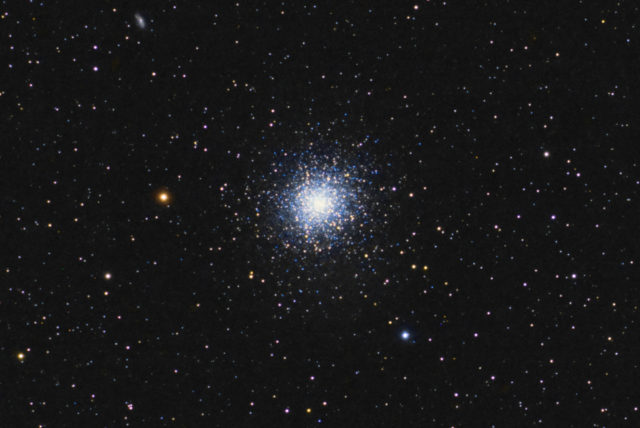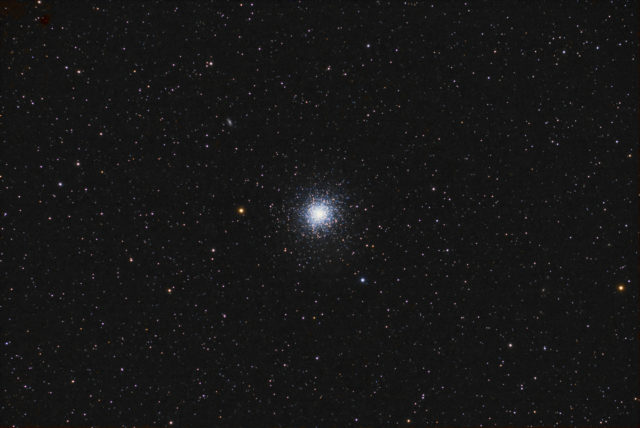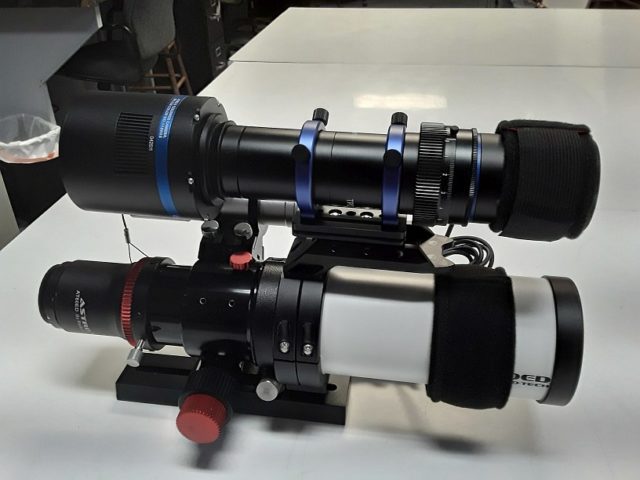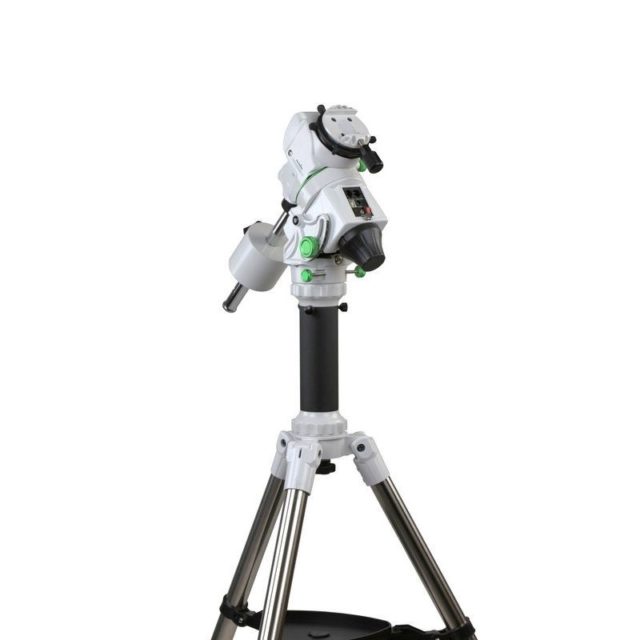This combo worked on the GTi mount, but was a little on the heavy side. It works better with just the AT60ED and my 30mm mini-guidescope. The camera is a QHY183C.
Monthly Archives: March 2023
The Rosette Nebula from the Big City – March 15th, 2023
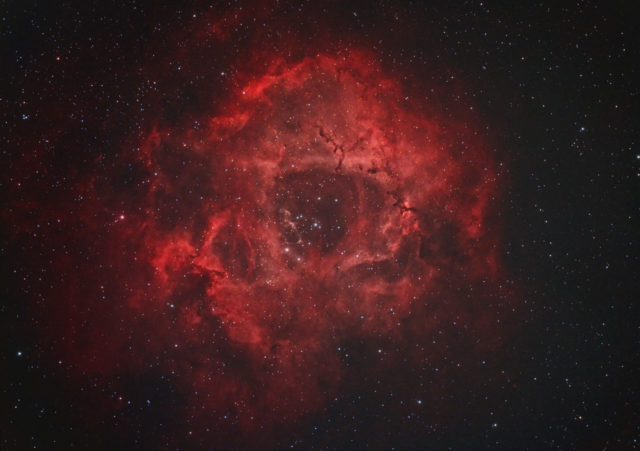
It was the first time using my new camera in heavy LP from the metro area where I have been staying. I went with the L-eNhance filter and picked the Rosette Nebula to test it. The Rosette was just crossing the meridian when I started imaging it. Also, I was troubleshooting the issues I have with flats, which this camera seems to be very sensitive about and worked on that during this session.
I also tried something new for me in processing the image. A relatively new (2017) sharpening procedure called Absolute Point of Focus (APF or APF-R) was done on the image. You can read about it and see two videos on how it is done at this link.
In this case, I had already ran the image through Starnet++ to cleanly remove all the stars. I then used the APF-R method to enhance the nebula only, blending in the stars afterwards. I must say the sharpening seemed superior to most other techniques I’ve used.
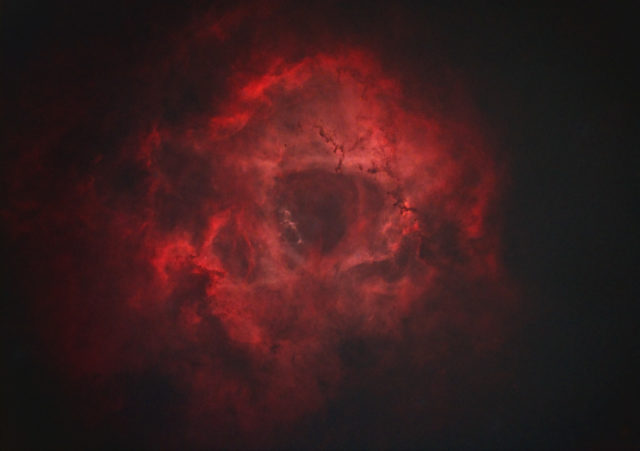
Anyway, the camera performed well with up to 3 minute exposures. An hour’s worth of data with the L-eNhance filter looked as good as anything I’ve done with the UV/IR filter from a darker site. There was too much LP to go with 5 minute subs, like I used to do with the QHY183c camera and that same filter, however.
As far as the flats, I used my laptop with a blank notepad screen up to illuminate the sensor while having a cheap white-light diffuser taped to the front of my scope. I used 2 second exposures and the resulting flat seemed to work for the most part. Good. I definitely need a way to create flats at night and this method is easy to do with what I already have.
Using all the other data taken that night and adding it together, I came up with the image below. It was the original 20 x 3 minutes, an additional 10 x 3 minutes, 21 x 2 minutes and 8 x 1 minute or a total of 140 minutes or roughly 2.3 hours.
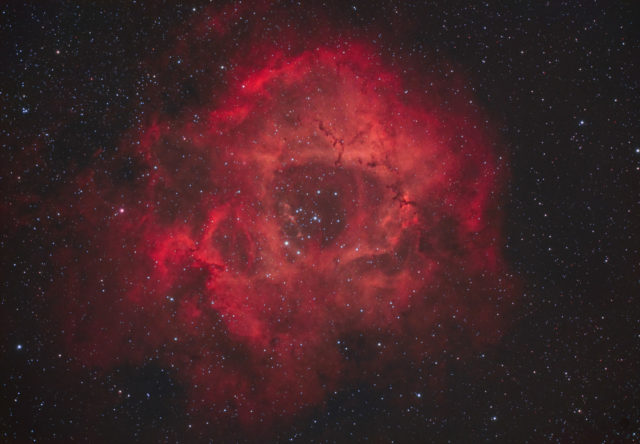
Imaging Session – Friday, March 3rd, 2023
It was a Friday night, March 3rd/4th, clear and cool. The Moon was out at 83% full. So, I thought it would be a perfect night to test the Antlia Triband RGB Ultra filter in moonlight conditions to see how bad that would affect it and to get an update on how Comet C/2022 E3 was doing.
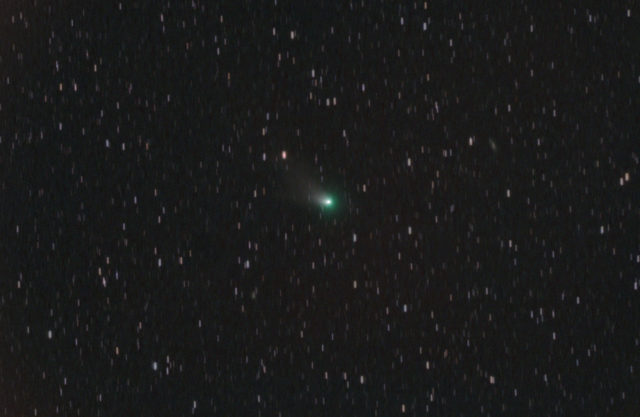
Well, the comet’s photogenic appearance has diminished quite a bit since I last imaged it in mid-February. The filter I used probably attenuated the brightness, but by the size in this full field image you can see the comet is much further away from us and receding into the distance fast. Oh, well. It was fun while it lasted.
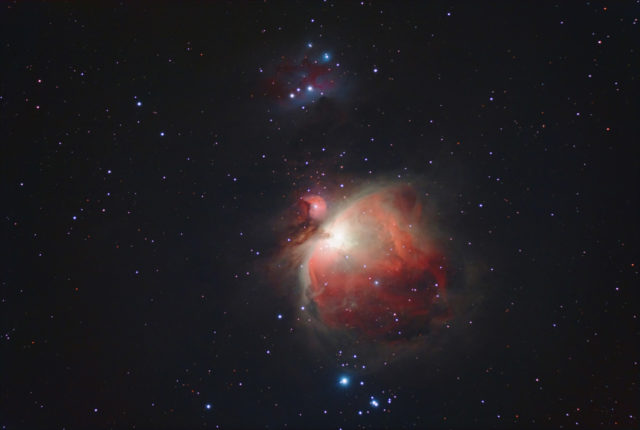
Next up, I did some EAA-type imaging to test short exposures with the filter on a bright object like M42. It worked pretty good for such a short time (83×15 sec or 20 minutes) of exposure. But, it would need quadruple that time to get right and I was more interested on using longer exposures that would bring out dimmer nebulae better.
So, I switched to the nearby Horse Head Nebula and Flame to test the filter with one minute exposures. I refocused first since M42 looked out of focus and glad I did since it was way off.
The Horse Head and Flame were a better choice for the amount of moonlight out and a better test of the filter’s ability to pick up H-Alpha nebula light. I thought it came out good for only 40 subs:
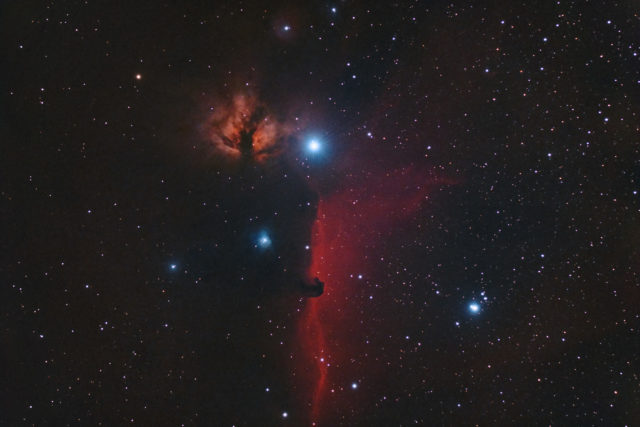
When Orion and all the good objects there got out of position and got into the power lines, I moved further east to get more of the Rosette Nebula, which I imaged a few weeks prior. It was also closer to the moon and had a strong gradient due to moonlight and the vignetting my imaging train has. I managed to minimize it in post processing, but it was not exactly easy. After processing, this is the 60 x 60 sec of exposure with the Triband filter I managed to get:
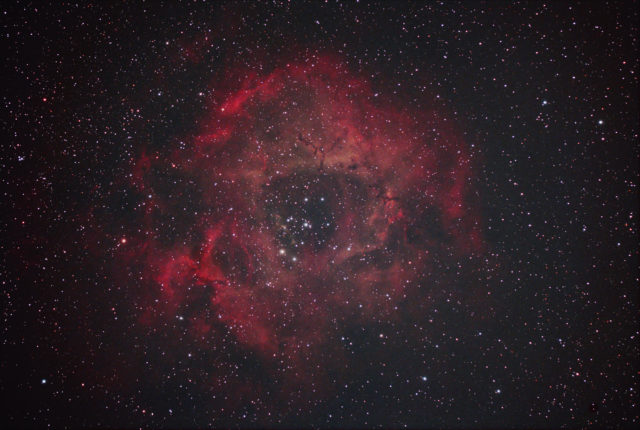
I combined that with the data I previously had that was taken with just a clear UV/IR cut filter:
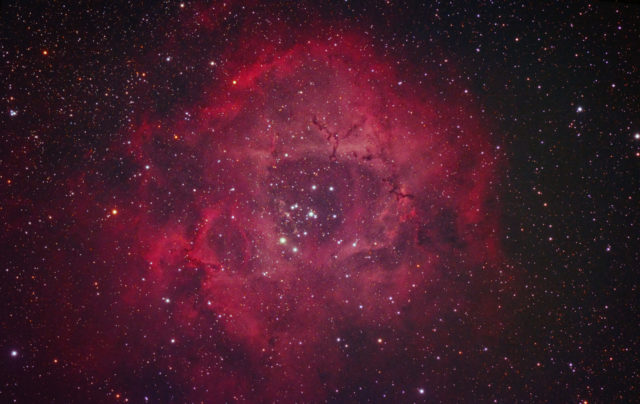
Not too bad of a mixture. After these runs, I moved to the east and tried imaging a few things there, but the moonlight and LP on that side was more than what the filter could deal with, it seems.
I imaged M101, but the gradient was severe and the image was very difficult to flatten all of that gradient out and preserve the dim areas. By the time I got rid of it all, the colors were drained out and no amount of saturation adjustments were going to bring them back.
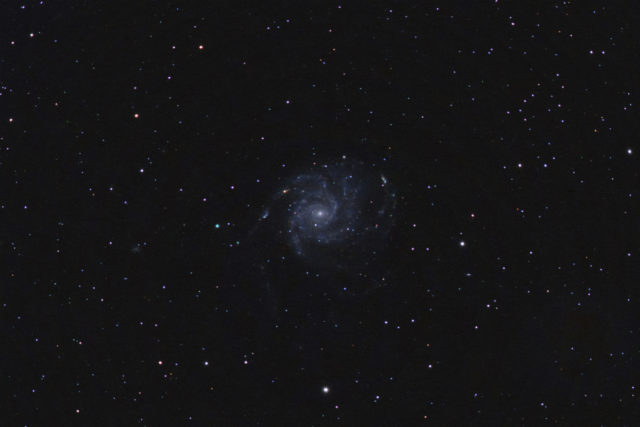
So, tried my luck on the M13 Globular Cluster, which was a good test for the Antlia. Still had a strong gradient to deal with, but since it has no nebula parts, it was much easier to get rid of:
